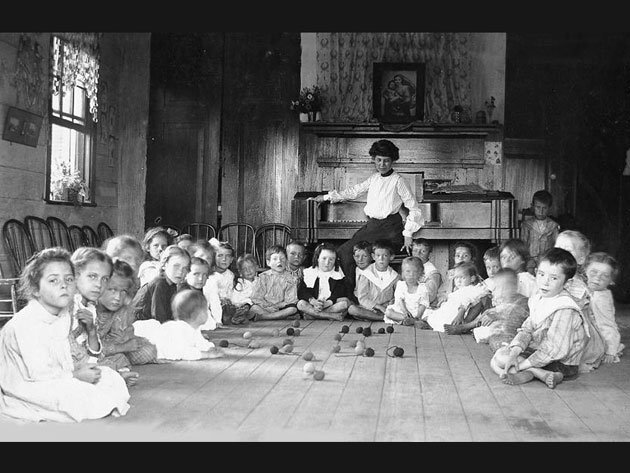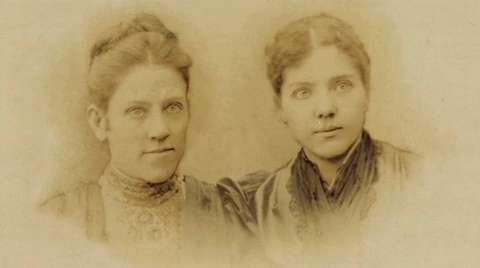The History of the Hill Sisters
The remarkable story of Patty and Mildred Hill is not just one of local and national acclaim, but one of global importance. Indeed, the city of Louisville itself played a crucial role in the sisters’ work, as its post-Civil War culture supported education, social improvement, and the rising role of women as advocates of community. City leaders also made intentional efforts to increase the quality of life among residents, most notably for children, immigrants, and those impoverished by war. The Hill sisters became leaders within this local movement through efforts to formalize mission-based educational practices with the city’s children, known nationally as the “Louisville Experiment.”
Influential women in the city felt Louisville’s children needed stability through social services and education, and they formed the Louisville Free Kindergarten Association and Kindergarten Leader training school with Patty Hill as one of its first students. While Kindergartens existed within the United States prior to this experiment, they were not standardized as a practice in most cities. Patty had a strong desire to help those less fortunate, a mission she learned growing up in a progressive Presbyterian household
alongside her parents’ Bellewood Female Seminary in Anchorage. There, Patty became a proponent of learning through play and song and believed that children’s creative expression came from connecting with nature, with constructive materials, and with each other.

As a composer, Patty’s sister Mildred delighted in experimenting with melodies for use in the classroom. She was inspired by “Negro street cries,” the short, catchy jingles of Louisville’s black merchants sung at storefronts and corner stops to entice buyers. Mildred collected these street cries, noting the uniqueness of the African American sound as a newly-formed type of American music. She believed this style was not only useful for all musicians but also had a distinct power to call forth the imagery of the past in a way no music had ever done before. Patty’s love of education and Mildred’s love of music led them to develop a curriculum that involved circle time and songs to start each day. These were innovative practices in 1880’s Louisville - practices that brought educational reform to the city as a whole.
In 1893, Patty and Mildred presented a Kindergarten exhibit at the Chicago World’s Fair and earned national accolades for their new techniques. They published a music book for teachers called Song Stories for the Kindergarten that included a simple tune called Good Morning To All, a tune we know today as Happy Birthday to You. Their methods became popular, replacing the under-used German curriculum, and Kindergarten began to travel the world. The songs, of course, traveled with them.
Patty was recruited to Teacher’s College at Columbia University and became one of the world’s foremost leaders in early childhood education. Mildred continued to study, compose, and write about music until her death. As America solidified a culture of individualism, children became a symbol of hope. No song encompassed these ideals better than Happy Birthday to You, known today as the most famous song in the English language. But Happy Birthday is not just a song - it is also the story of a city, its culture, and a pair of sisters destined to change the world.



